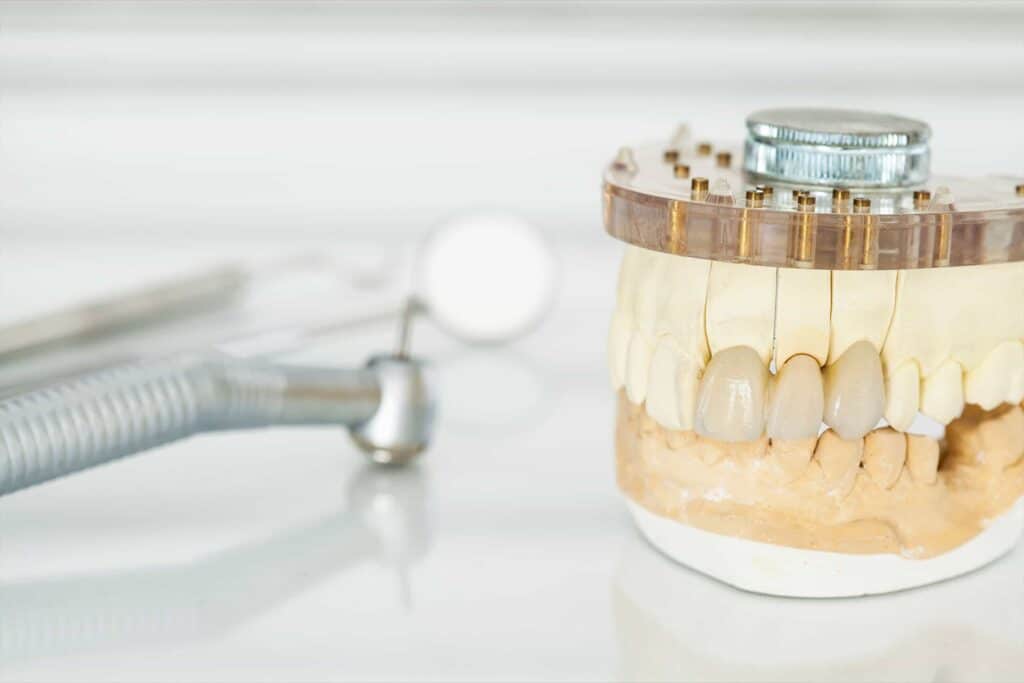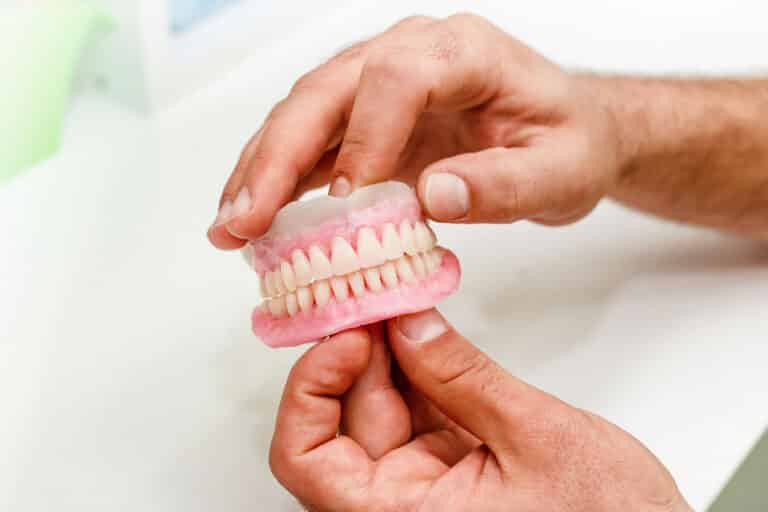Braces have come a long way in recent years. It’s not uncommon to know more than one person with adult braces and a retainer. Braces are no longer reserved only for the awkward teenage years, and as technology evolves, the number of adults with braces continues to climb.
Most dental professionals offer adult braces in a similar fashion to those for children. From traditional metal braces to clear aligners, adults have plenty of choices regarding the type of braces they’d prefer to wear. However, a few differences come with adult braces. If you’re considering wearing them, you’ll want to have an excellent working knowledge of the topic.
How are Adult Braces Different?
Braces perform the same job, regardless of your age. Whether you’re 13 or 30, the purpose of braces is to shift, align, and straighten teeth as well as correct bite problems. There are slight differences between braces for children and adults. But most of those dissimilarities focus on the process rather than the product. The actual products themselves are very similar. There are different factors to treat since physically children are different from adults.
Why are They Called Adult Braces?
Adult braces are named for what they are, which is braces for adults. While the product is similar, adult braces can take longer to work. The main difference between adult braces and those made for children are the prerequisites prior orthodontic work. As well as physical differences between adults and children.
You see, children and adolescents are still growing whereas the adults are done. The bones, particularly the jaws, of children can still grow which can make things more difficult to treat. Wearing braces as an adult comes with a different set of challenges, and these include:
- Possible bone loss and gum disease make it riskier to move teeth predictably without worsening the periodontal status.
- The need to fix any issues with the teeth prior to braces. It is a bad idea to start braces when there are cavities or other problems.
- Missing or damaged teeth (such as a previous tooth extraction) might make it challenging to severely shifted teeth.
- Previously treated teeth that are anchored and cannot move. These are implants and bridges.
- Additional professional collaboration, such as seeing both your dentist and periodontist to ensure that bone loss isn’t a result of shifting teeth.
What Kinds of Braces are There?
Adult braces come in a few forms, and you’ll decide, along with your dentist, which type is right for you. There are plenty of factors to discuss when choosing braces. It’s best to let a dental professional lead the way. Even if you already have your heart set on a specific type, speak to your dentist as there are some movements that must be done with a specific set of braces.
Metal Braces
Advances in technology have made today’s metal braces smaller, more comfortable, and faster. These still use a wire and are what most people think of when they hear about braces. While metal (also known as traditional) braces are the most common braces worn worldwide, alternatives are becoming more and more popular.
Ceramic Braces
Made of white or tooth-colored material, ceramic braces are less visible than metal. Ceramic braces are a great meeting place for patients who like the idea of metal braces but want the discreteness that comes with invisible aligners. These are also a good alternative for those who cannot get invisible aligners.
Self-Ligating Braces
Self-ligating braces work similarly to metal and ceramic braces, but they rely on clips to stay in place as opposed to the more traditional elastic rubber ties. These look and function very similar to metal braces.
Lingual Braces
The most uncommon style of braces, lingual braces are attached behind the teeth on the tongue side. These can work well for adults who don’t want visible braces but have involved orthodontic needs. If you’re interested in lingual braces, ensure that you’re working with an orthodontist skilled in placing and adjusting them.
Clear Aligners
Clear dental aligners have seen a popularity surge in the last two decades, brought on by the brand Invisalign introducing their invisible braces in the early 2000s. While Invisalign is no longer the only clear aligner brand out there, they are one of the most recognized brands of clear aligners.
What are the Differences Between Clear Aligners and Wire Braces?
Most patients are curious as to the difference between clear aligners and wire braces. While comfort is typically a factor, it also varies from patient to patient. Some may feel that wire braces are more comfortable, while others prefer clear aligners.
The main difference between the two, without getting too deep into price differences and fitting, is the fact that traditional braces use a wire in combination with brackets that are attached to the teeth. On the other hand, clear aligners are made to fit over the teeth, and they’re also removable, so patients can take them out to eat. They also work differently where wire braces pull teeth while clear aligners push teeth. However both types of braces slowly shift the teeth over time, moving toward the desired result.
Can I Put Braces on My Top or Bottom Teeth Only?
While it’s not common, it could be suitable for some patients to have braces put onto either their top or bottom teeth only. In rare cases, some patients require one-arch treatment, such as when they have perfect teeth on one arch, but the other has some spacing issues. One-arch treatment is usually for cosmetic purposes only. It’s not possible to fix an underbite, overbite, or crossbite unless you treat both the top and bottom teeth.
If your goal is specifically to straighten, braces on only the top or bottom teeth might work for you. However, in most cases, there is more to orthodontics than just making them look good. There are almost always actual orthodontic issues that most professionals will recommend treatment on both the top and bottom teeth.
Do You Need a Retainer After Getting Adult Braces?
Regardless of your age, you’ll have to wear a retainer once your braces have been removed or you’ve finished your clear aligner treatment. Failure to use your retainer properly, as directed by your dentist, will result in future orthodontic issues and shifting teeth.
How Long Do I Have to Wear My Retainers?
One you’ve completed treatment, you’ll have to wear your retainers as instructed. Your dentist will give you specific instructions, depending on the type of retainer. Some are bonded and worn 24 hours a day, 7 days a week while others are only worn at night.
Can You Get a Permanent Retainer?
When you’ve finished your treatment with braces, you might have the option to get a permanent retainer fixed to your teeth. Keep in mind that this will have to match with your dental goals and needs, and that permanent retainers, while not technically permanent, cannot be removed easily. They also have more issues with tartar buildup and need to be cleaned more frequently.
However, they have been known to last around 20 years, and can be replaced once they wear out. If you’re not keen on the idea of wearing your retainer only at night, or you’re afraid you’ll constantly forget, a permanent retainer could be the right choice for you.
How Much Do Braces Cost?
The cost of braces varies widely by case. The amount you’ll pay depends heavily on how much dental work you need prior to applying braces, what type of braces you choose, and how long you’ll have to wear them.
Generally, clear aligners for adults cost between $2,500 to $8,000, while metal braces fall between $2,500 and $7,000. The total out of pocket cost may vary depending on any insurance coverage.
Does My Insurance Cover Braces?
While many insurances cover braces, you will need to double check to make sure there are still any remaining benefits left. There are plenty of regulations regarding what is covered when you go in for dental work. If you have any questions about the coverage and out of pocket costs, contact your dental office and they should be able to answer your questions. It doesn’t hurt to verify with your insurance company as well so you know what you’ll have to pay out of pocket.
Adult Braces and You
There are many adults today that wear adult braces. There are many benefits to straightening your teeth: less food impaction, healthier gums, easier to clean, and of course better esthetics just to name a few. Some you might not even notice due to the technology of clear aligners or lingual braces. There is much to think about when considering if adult braces are right for you, and it all starts with a dental appointment.





